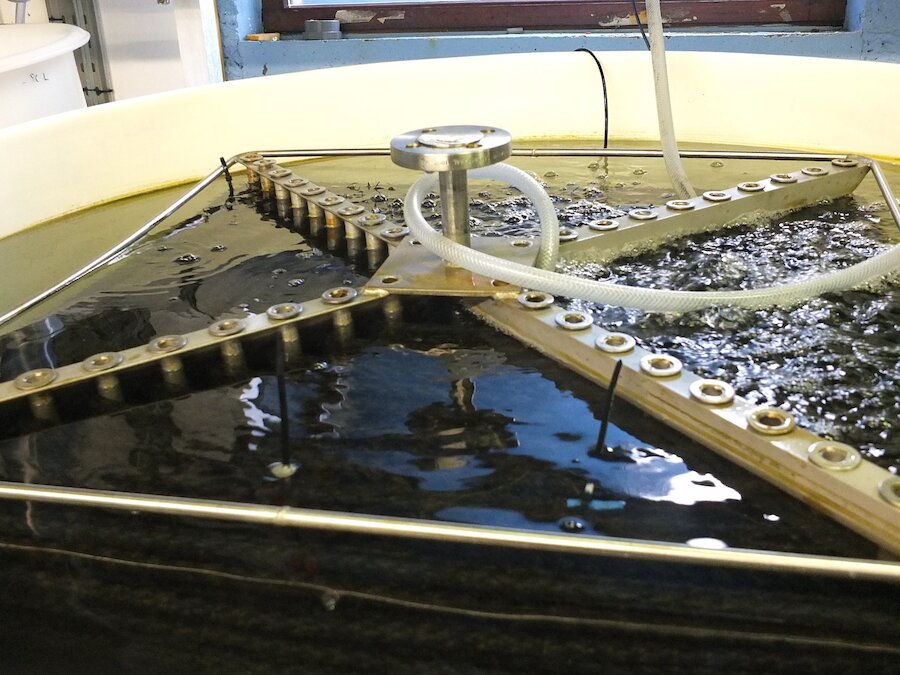Musseling in: The £1.7 million Stepping Stone mussel hatchery project in Shetland is showing encouraging results, and land-bred spat is now at sea.
It takes three years for Mytilus Edulis, that tasty mollusc, to grow to a size where it can be eaten, satisfactorily, and it seems a straightforward process: you just put some ropes in seawater and hope for the best. Don’t you?
Well, there’s a bit more to it, says Michael Tait, owner of Shetland Mussels, which produces over 2000 tonnes of mussels each year.
“That’s what we did when we first started,” he said. “We just put ropes in all the sites to try and catch spat. But we found that if we focus our efforts in certain areas we got more success, and that’s helped in building the industry to the point where well over 6000 tones of mussels came out of Shetland last year.”
In places like Spain and Holland, mussel spat is harvested from the wild and used as seed. Commercial hatcheries for salt water mussels are rare, but things are changing. Michael chairs the Stepping Stone Project at Shetland’s NAFC Marine Centre, part of the University of the Highlands and Islands. It’s a £1.7m attempt to establish a commercial mussel hatchery for the Scottish industry, and last October the first land-bred spat were taken offshore. Through the depths of a Shetland winter, they’ve been growing, slowly.
“They’re in the sea and marginally larger than when they went in, “ said Michael. “They’ll take two more summers to get to market size.”
But this is an important step towards ensuring the industry can cope with any accident of nature in the future:
“There is easily the chance at the moment that we could have a season of very poor spat falls and that industry tonnage could come tumbling back down. So we want to be ahead of that problem, and that’s why we’re working so hard in this area. We are hoping to begin the new spawning work in March at the NAFC and will hopefully be able to improve on our survival levels and get more reliable with the process. We have been able to secure some helpful SIC funding to cover come parallel trials so we can learn faster and we are looking forward to seeing many more batches going to sea this year.”

